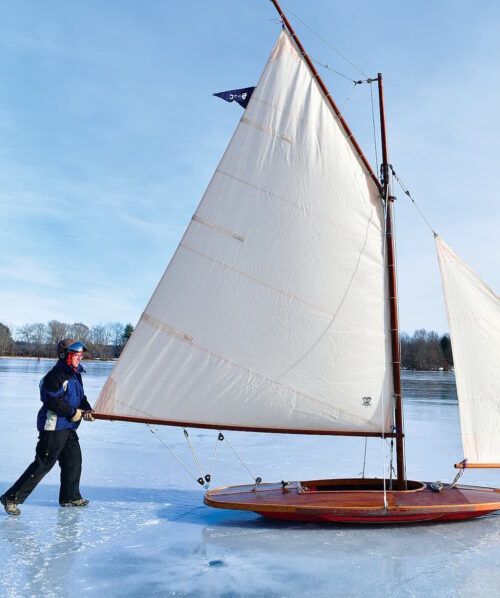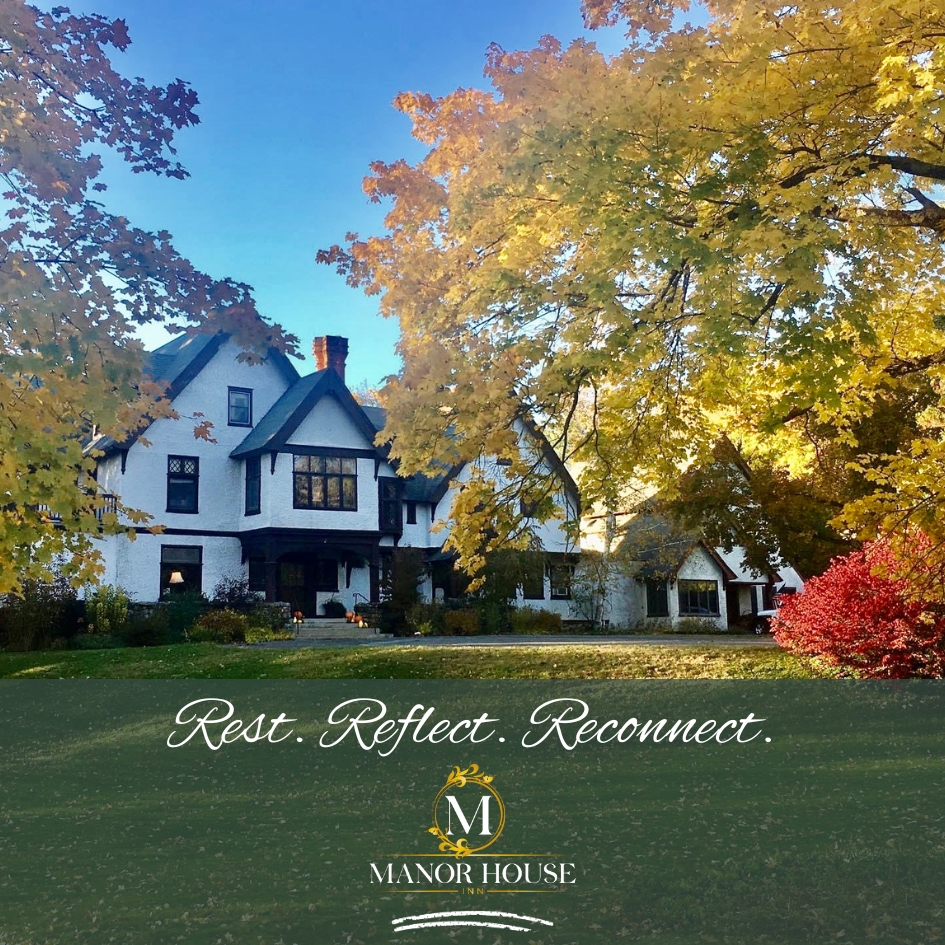January 13, 2025
A Mecca for Ice Boaters
By Joseph Montebello
On a frigid January day, I was introduced to ice yachts. While I had been assigned to write a piece about the sport of iceboating, my knowledge of it was minimal, to say the least. After discovering the archives of the Connecticut Ice Yacht Association at the Litchfield Historical Society I learned its history and obtained a membership list. Reading about the sport and watching boaters in action are decidedly different experiences. Thanks to member Ted Bent, I had the chance to meet some of the club’s participants and watch them in action.

Sailing the lake’s crystal clear waters in the summer is the perfect escape. But winter brings a whole new dimension. Its size, shallow depth, and strong breezes have made Bantam Lake one of the best ice boating lakes in the Northeast. Since its inception in 1939 the Connecticut Ice Yacht Association (renamed a “Club” in 1941) has attracted both locals and enthusiasts from outlying states to experience the joys of winter yachting.
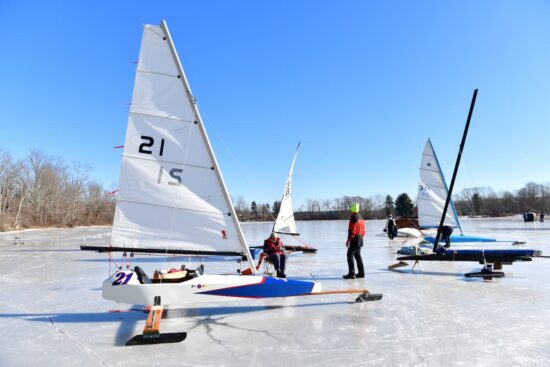
By 1941 there were 37 active members sailing on Bantam Lake. Today the membership totals 54 and even though women were accepted in 1947, there is only one honorary female member.
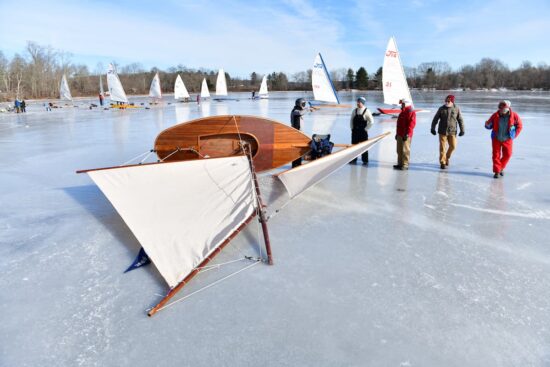
Boat design varied from those built by professional makers such as Mead Glider Company in Chicago, Illinois, and the Palmer Boat Company in Fontana, Wisconsin, to homemade versions. Alexander Bryan, an early member, designed and built eight Tumbleweeds, known as T-Boats, in his garage at a cost of $110.00. In 1937 a build-at-home design called the International DN became available and has become the most popular iceboat in the world.
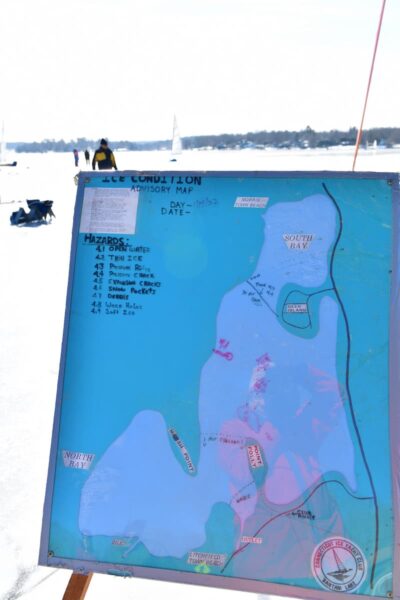
“Bantam Lake is one of the best sailing lakes in the Northeast and people come from all over to sail here,” says Commodore Tony Bosco. “The snow melts just enough during the day and then freezes over at night. The crust remains until the following afternoon. The process keeps repeating itself so we can ice boat here all winter.”
Joining Bosco to test the lake for safety are George Neyssen, Dave Danielson, and Owen Mehle. Dressed in several layers of warm clothing, wearing spiked hunter’s boots and armed with Eagle Claw ice safety picks, a whistle, a safety line, and a foot-long drill to determine the depth of the ice. It has to be at least four inches to be sailable.
“We set up races,” explains Bent. “I have a DN. The plank goes horizontally, like a tricycle. There is a runner, similar to an ice skate blade, on each side and in the front. That blade is used to turn the pedals. If the wind is blowing 20 miles per hour, you can go 40 because there is no resistance holding the boat in the water.”
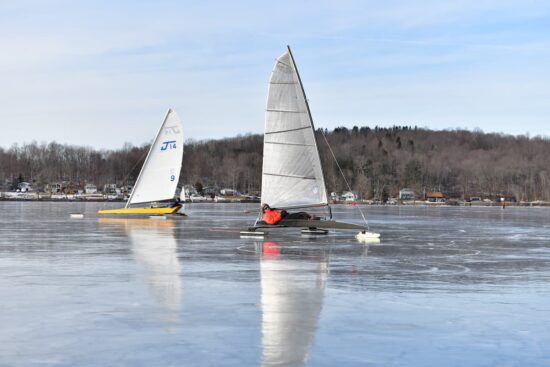
The ice level is perfect and the men are ready to start their adventure.
“It’s the competition and the camaraderie that get us revved up,” says Bosco. “You’re on the starting line and pushing off, racing at 50 to 60 miles an hour. You can’t beat that feeling.”
To learn more contact Tony Bosco at beabosco2@gmail.com





